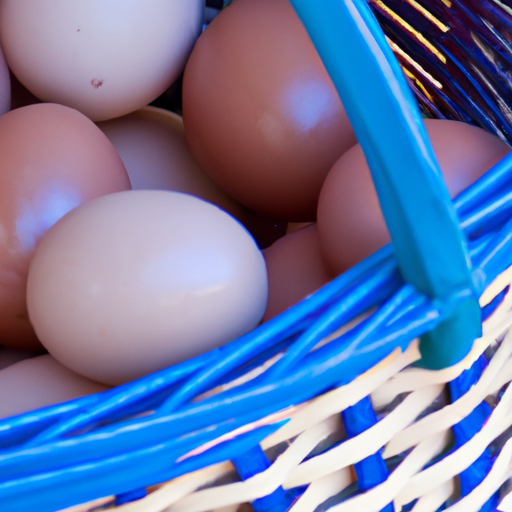Are you looking to boost the egg-laying frequency of your beloved hens? If so, you’ve come to the right place! In this article, we will uncover some effective tips and techniques that will help you maximize your hens’ egg production. From providing a balanced diet and ensuring proper lighting to creating a comfortable and stress-free environment, we will explore various strategies that will have your hens happily laying eggs in no time. So, let’s get started on this egg-cellent journey together!
Feeding a Balanced Diet
To increase the egg-laying frequency of your hens, it is essential to provide them with a well-balanced diet. A diet rich in protein, calcium, and other essential nutrients will promote healthy egg production. It is important to feed your hens a commercial layer feed that is specifically formulated to meet their nutritional needs. Additionally, offering calcium-rich supplements such as crushed oyster shells or eggshells can help ensure adequate calcium intake, which is crucial for strong eggshells. Regularly check the expiration dates on your feed and supplements to prevent feeding expired products.
Maintaining Optimal Lighting Conditions
Proper lighting plays a significant role in stimulating egg production in hens. Ensure your hens receive a minimum of 14-16 hours of light per day to mimic ideal conditions for egg-laying. Natural daylight is preferable, but if needed, you can also use artificial lighting sources. Install timers or automatic lighting systems to maintain a consistent lighting schedule. It is important to note that sudden changes in light levels can stress hens and disrupt their laying patterns, so make adjustments gradually and consistently.
Providing a Comfortable and Clean Environment
Creating a comfortable and clean environment for your hens is crucial in maximizing egg-laying frequency. Make sure they have ample space in their coop or housing area to move and stretch their wings. Regularly clean their living quarters to prevent the buildup of dirt, feces, and pests that can create stress and reduce egg production. Bedding materials such as straw or wood shavings should be changed regularly to maintain cleanliness and avoid unpleasant odors. Providing nesting boxes filled with clean, dry materials will also encourage hens to lay their eggs in designated areas.
Ensuring Adequate Water Supply
Water is a vital component for the overall health and productivity of your hens. Make sure your hens have access to fresh and clean water at all times. Ensure the water containers are not easily tipped over and are regularly cleaned and refilled. During hot weather, consider providing shade and using cooling techniques such as misting systems to prevent dehydration and heat stress, which can hamper egg production.
Maintaining Optimal Health and Hygiene
Healthy hens are more likely to lay eggs consistently. Regularly monitor your hens for any signs of illness, such as decreased appetite, lethargy, or abnormal behavior. Consult a veterinarian if you notice any concerns. Implement a routine vaccination schedule, deworming program, and pest control measures to prevent diseases and parasites that can negatively impact egg production. Additionally, providing hens with dust baths or access to fine sand helps them keep their feathers and skin clean, reducing the risk of mites or other external parasites.
Introducing New Hens Gradually
If you are adding new hens to your flock, it is important to introduce them gradually to minimize stress and maintain the egg-laying frequency of existing hens. Quarantine new hens for at least two weeks to ensure they are healthy and disease-free before integrating them with the existing flock. Use a separate pen with adjacent wire fencing to allow visual and auditory interaction without direct contact. After the quarantine period, gradually introduce them to the existing flock during non-peak laying hours to minimize aggression and territorial disputes.
Providing Mental Stimulation
Hens are social animals that require mental stimulation to maintain their overall well-being and maximize egg-laying frequency. Provide toys or objects such as hanging cabbage or treat balls to encourage natural foraging behavior and keep them entertained. You can also consider rotating their environment or introducing new objects periodically to prevent boredom. Engaging with your hens through gentle handling and talking can also help build trust and reduce stress.
Avoiding Excessive Stress
Stress can significantly impact egg-laying frequency in hens. Minimize external stressors such as loud noises, sudden temperature changes, overcrowding, and excessive handling. Hens should have access to peaceful and quiet areas where they can retreat and rest. Avoid abruptly changing their routine or environment, as this can cause unnecessary stress. By providing a calm and predictable environment, you can help maintain a consistent egg-laying pattern.
Monitoring Egg Production
Regularly monitor and record the egg production of your hens. This will allow you to identify any changes or potential issues quickly. Keep a record of the number of eggs laid by each hen, as well as the quality of the eggs. If you notice a sudden and significant decrease in egg production, consult a veterinarian to rule out any underlying health problems or nutritional deficiencies. Regular monitoring allows you to make informed decisions and take timely action to ensure the well-being and productivity of your flock.
Ensuring Proper Ventilation
Proper ventilation is essential to maintain a healthy and productive environment for your hens. Good air circulation helps remove excess moisture, ammonia, and other airborne pollutants that can impact respiratory health and egg production. Ensure your coop or housing area has adequate windows, vents, or fans to allow for fresh air exchange without creating drafts. Regularly clean and inspect ventilation systems to prevent blockages and ensure optimal airflow.
Considering Breeds and Age
Different chicken breeds have varying egg-laying capabilities. If you are specifically looking to maximize egg-laying frequency, consider breeds known for their high egg production rates, such as Leghorns or Rhode Island Reds. Additionally, the age of the hens can also affect their egg-laying frequency. Hens typically start laying eggs around 5-6 months of age and reach peak production between 1-2 years. While older hens may lay fewer eggs, they may produce larger eggs. Understanding the characteristics of different breeds and the age of your hens can help you set realistic expectations.
Seeking Professional Advice
If you are experiencing persistent difficulties in increasing the egg-laying frequency of your hens despite implementing various strategies, it may be beneficial to seek professional advice. Consult a poultry nutritionist, veterinarian, or experienced farmers to evaluate your management practices and provide personalized recommendations. They can assess factors specific to your flock, such as diet, health, or environmental conditions, and offer tailored solutions to enhance egg production.
Maintaining Egg Collection Routine
Establishing a consistent routine for egg collection is crucial to ensure optimal freshness and reduce potential problems. Collect eggs at least once or twice a day to prevent breakage, accidental trampling, or hens developing the habit of egg eating. Inspect each egg for abnormalities or any signs of damage. Properly store the collected eggs in a cool and dry place with moderate humidity. Regularly clean nesting boxes to provide a clean environment for laying and minimize bacterial contamination.
Considering Seasonal Variations
Egg-laying frequency can fluctuate based on seasonal changes, particularly in response to natural light variations. As daylight hours decrease during the fall and winter months, hens may naturally decrease their egg production or enter a temporary period of reduced laying known as molt. This is a normal process that allows hens to replenish their feathers. Understanding and anticipating these seasonal variations can help you manage your expectations and adjust your strategies accordingly.
Avoiding Forced Molting
Forced molting, a practice involving intentional starvation or other extreme measures to induce molt, is highly discouraged and considered inhumane. While forced molting may result in a temporary increase in egg production, it can severely compromise the welfare of hens and lead to long-term health issues. It is essential to prioritize the well-being and natural behavior of your hens over short-term increases in egg production.
Being Patient and Persistent
Increasing the egg-laying frequency of your hens requires patience and persistence. It may take time for changes in diet, environment, or management practices to take effect. Monitor your hens consistently, make small adjustments as needed, and evaluate the results over a reasonable period. Each hen is unique, and factors such as breed, age, health, and individual characteristics can influence egg production. By being patient and persistent, you can optimize the conditions for your hens and gradually increase their egg-laying frequency.
Maintaining Proper Stocking Density
Proper stocking density is critical to ensure the well-being and productivity of your hens. Overcrowding can lead to stress, aggression, and reduced egg production. Each hen should have enough space to move freely, stretch its wings, and access feed and water without competition. Consult guidelines or recommendations specific to your chicken breed or consult with experienced poultry farmers to determine the appropriate stocking density for your flock.
Implementing Biosecurity Measures
Biosecurity measures are essential to prevent the introduction and spread of diseases within your flock. Strictly control or limit access to your flock’s living area to prevent contact with potentially infected individuals, wild birds, or other animals. Practice proper hygiene, such as washing hands before and after handling the hens, disinfecting equipment, and wearing separate clothing or footwear when interacting with the flock. By implementing and maintaining biosecurity measures, you can minimize the risk of diseases that can disrupt egg production.
A Balanced Approach
To increase the egg-laying frequency of your hens, it is crucial to adopt a balanced approach that considers the various factors affecting their productivity. Combining strategies such as proper nutrition, lighting, health management, environmental cleanliness, and adequate mental stimulation provides a comprehensive approach to maximize egg-laying frequency. Implementing these strategies with care, consistency, and attention to the unique needs of your flock will help you create an ideal environment for optimal egg production.
Enjoy the Rewards
Increasing the egg-laying frequency of your hens not only provides you with a bountiful supply of fresh eggs but also allows you to witness the natural behaviors and interactions of these remarkable creatures. By following the recommended practices and investing time and effort into their well-being, you can enjoy the rewards of a productive and content flock. Appreciate the joy and satisfaction of providing a nurturing environment for your hens while enjoying the delicious and nutritious eggs they produce.




